The first image that often pops into mind when thinking of Maui is that of palm trees and sun-soaked beaches, but take a jaunt upcountry and you’ll be privy to a far different world. Kula, Ulupalakua, Makawao, and Pukalani are a much lusher realm, where eucalyptuses scent the crisp mountain air and ohia trees stretch into the vast sky above.
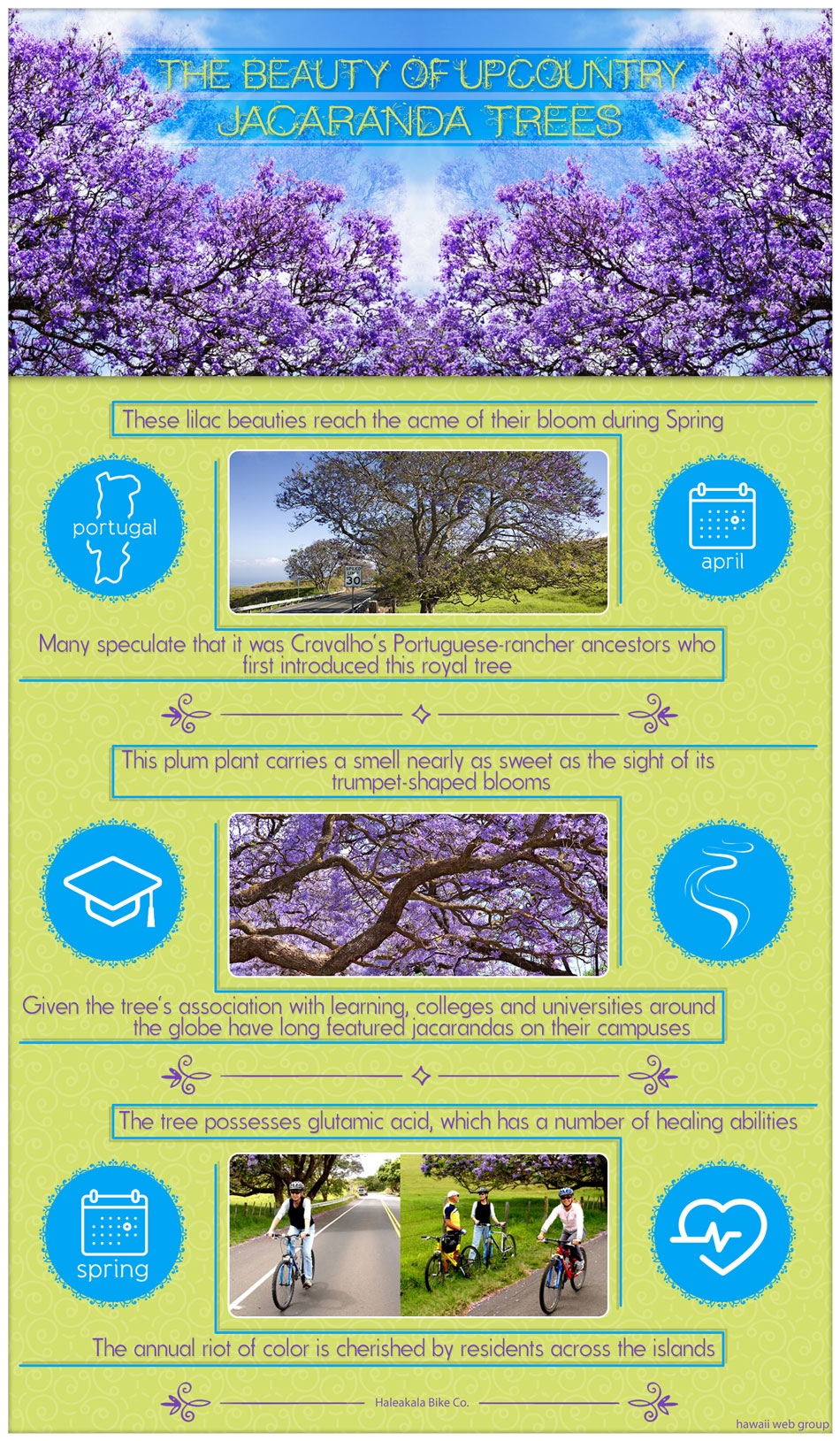
Of the many gorgeous sights you’ll see, your eyes will surely be captivated by the miles and miles of mauve jacaranda trees, and they’re blooming right now!
Splendid and stately, these lilac beauties reach the acme of their bloom during Spring, when locals and visitors alike drive to the island’s upper reaches to take in their brilliant blue and lavender hues.
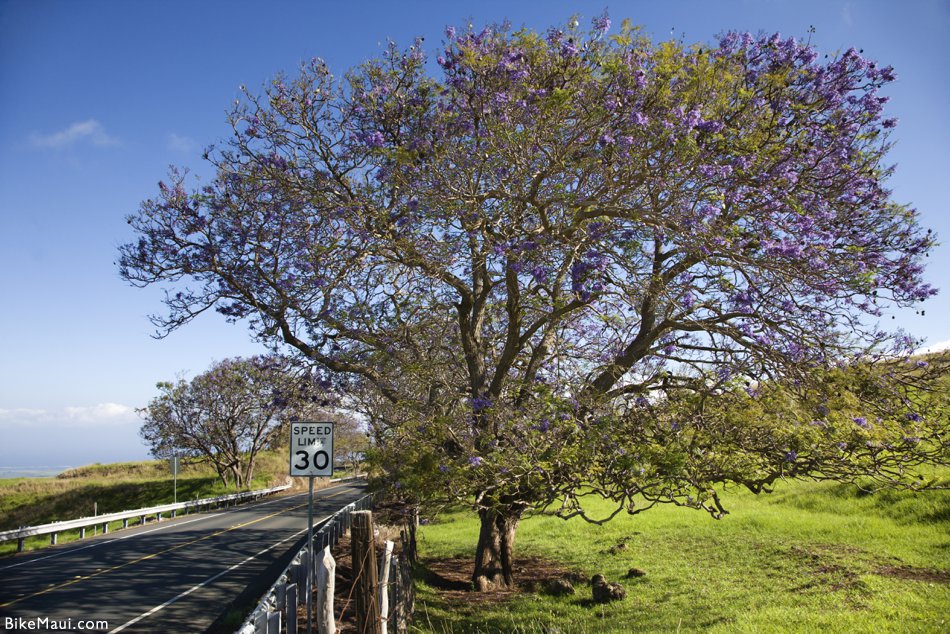
Thank Elmer F. Cravalho for the pastel touch on Maui’s sweeping slopes.
The former mayor of Maui County was raised in Keokea—the final outpost on the twisting Kula Highway—where jacarandas first appeared. During the late 1950s, the Portuguese descendant and Speaker of the Hawaii House of Representatives persuaded the Territorial Highway Commission to plant jacarandas along the highways of Kula and Pukalani. Today, the amethyst-shaded blooms continue to thrive, where upcountry’s cooler climes nourish its abundant growth.
There are few plants and animals endemic to Hawaii—nearly all flora and fauna were imported from outer shores—and the same holds true for jacarandas.
Many speculate that it was Cravalho’s Portuguese-rancher ancestors who first introduced this royal tree, as jacarandas originated in Brazil (and are now found throughout Cuba, Northwest Argentina, Bolivia, Jamaica, the Bahamas, South Africa, and Australia). They may have an affinity for warmer spots, in part because they rely on the monsoon-esque climates of sub-tropical shores to flower.

Its rhythmic name can be traced to South America—to be specific, the language of Paraguay, where jacaranda is equivalent to fragrant.
And so it is true: This plum plant carries a smell nearly as sweet as the sight of its trumpet-shaped blooms. Others speculate that the word is derived from Portuguese, for which it means “hardcore.” Whatever the case may be, it’s a core that’s steadily used: South Americans and Africans use the pale grey wood for carvings and other forms of turnery.
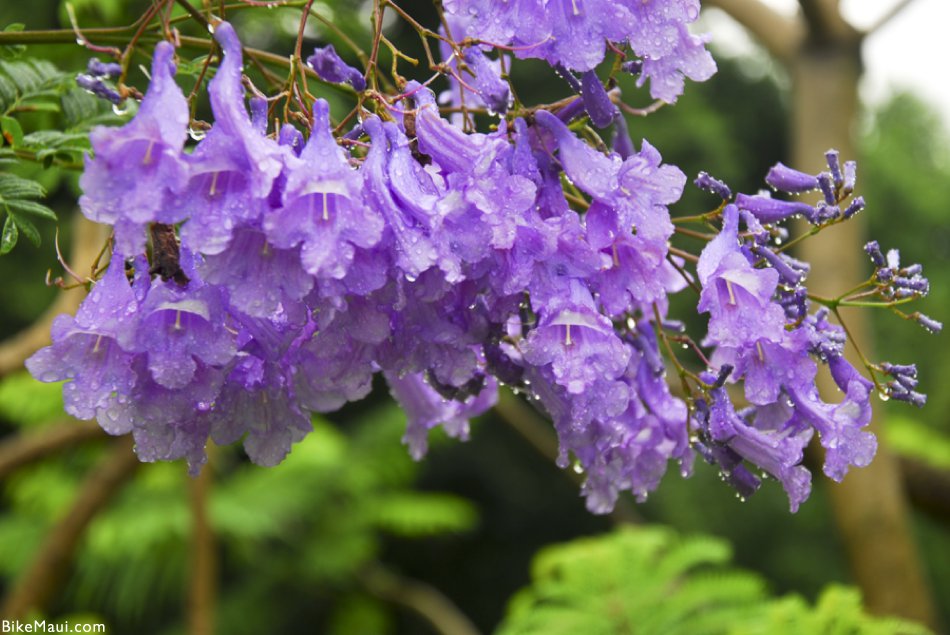
As with most beauties of the natural world, jacarandas—which are also known as Brazilian rose woods and green ebonies—are a rich source of legends.
In the United States, fortune ensues for those who are lucky enough to have a jacaranda bloom fall on their head. Meanwhile, fables from the Amazon tell of a priestess of the moon who descended from the tree before assimilating herself with local villagers, with whom she shared her bounty of wisdom and morals and showed them the difference between evil and good. Her work complete, she went back to the tree and floated to the skies above, where she was reunited with her soulmate—the child of the sun.
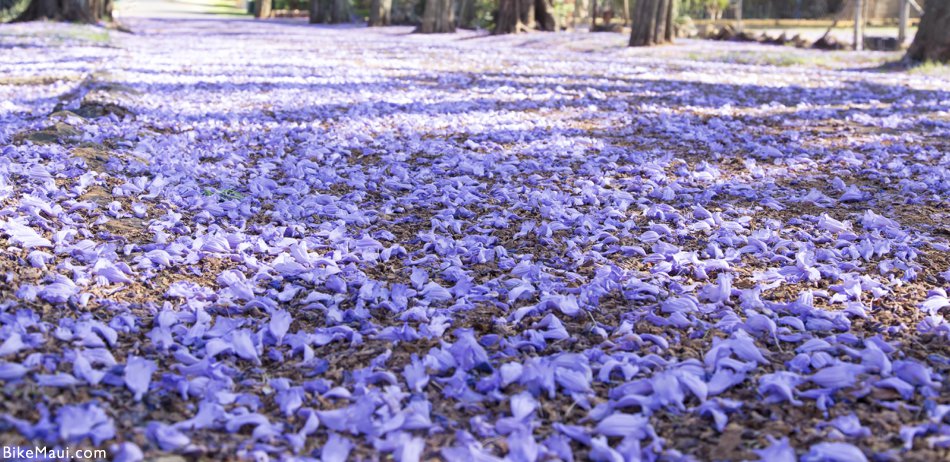
The myth persisted, enhancing the jacaranda’s magic:
Elder females within Amazonian tribes would gather residents underneath the shade of jacarandas—which is synonymous with order and knowledge—to dole out insights. And given the tree’s association with learning, colleges and universities around the globe have long featured jacarandas on their campuses—perhaps most notably so at the University of Queensland in Brisbane, Australia, where students know it’s time to crack down on studying when the petals fall to the ground (a spectacle that gave rise to the term Purple Panic). And within this lore? A boatload of additional myths—including the notion that one’s grade point average will fall by a point for each blossom that falls on their head.
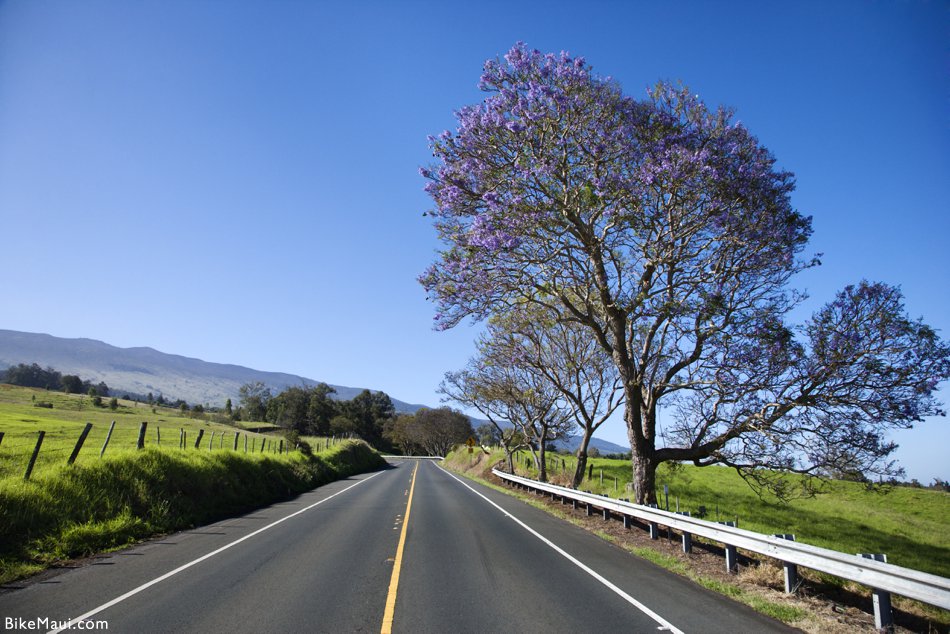
So taken with this vivid jewel, South Africa nicknamed its capital Jacaranda City (which is known to Afrikaans as Jakarandastad).
There, over 70,000 jacaranda trees stand, blanketing the city of a million in a sea of purple when they bloom in October and November. Down South, Australians are known to sing a carol each summer, calling out that “When the bloom of the jacaranda trees is here, Christmastime is near.” And British colonialists loved the purple haze, making an effort to plant jacarandas throughout Malawi, Zimbabwe, and Uganda. Their presence remains on the border between Ethiopia and Kenya, with trees on the Kenyan edge standing as lasting evidence of their presence.
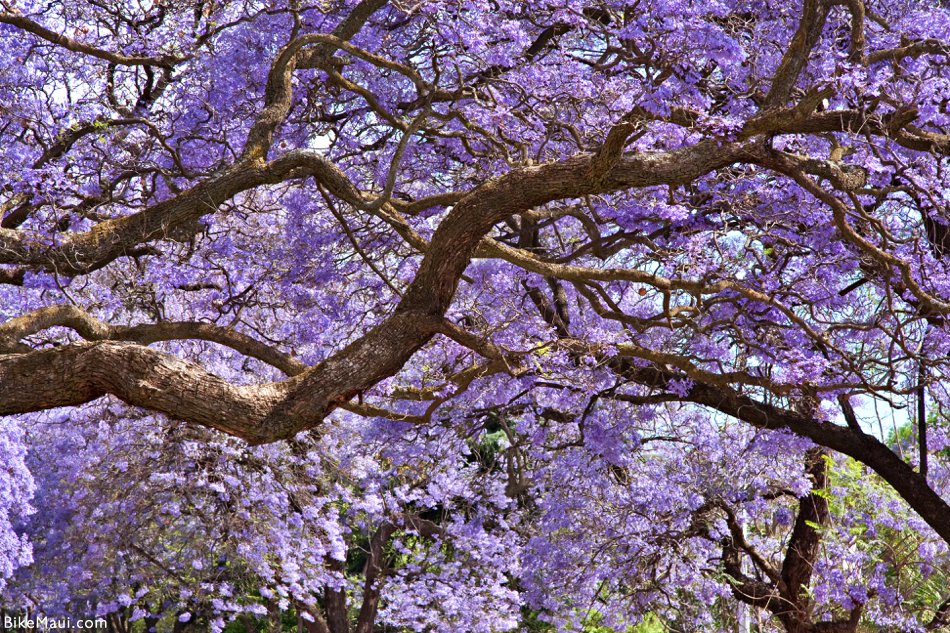
Serving as the subject of fierce debate in Pretoria, where the jacaranda’s invasive root system and need for water prohibit other flora from growing in its vicinity, jacarandas aren’t just ornamental jewels:
The tree possesses glutamic acid, which has a number of healing abilities—from the treatment of epilepsy to boosting collagen. Leaves and seeds were once used to combat bacteria, perhaps most notably as a defense against staph and e-Coli, as well as an alternative to penicillin when naturally treating syphilis.
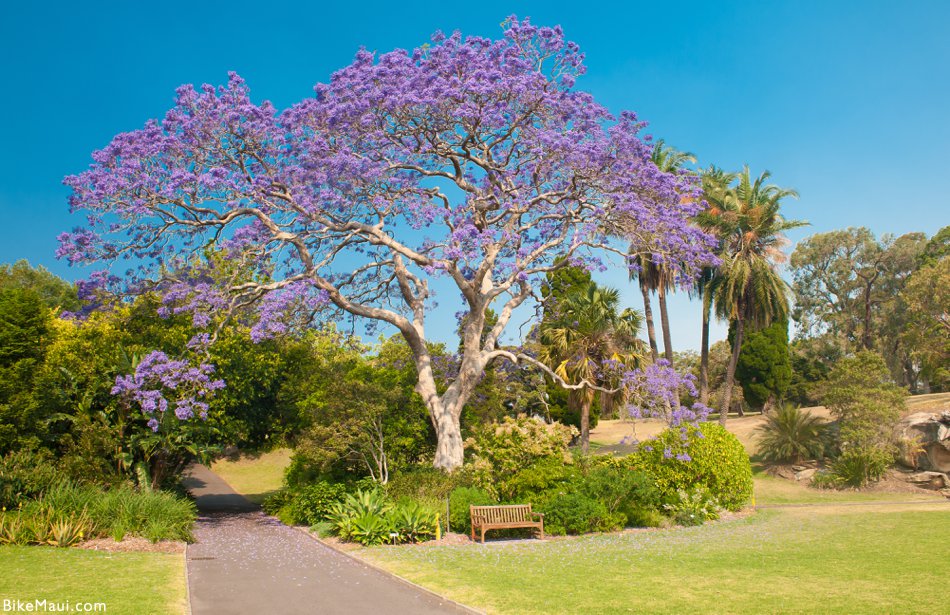
Over on Maui’s resplendent shores, jacarandas have long been celebrated as a sign of Spring’s arrival.
The annual riot of color is cherished by residents across the island, but holds a special spot in the hearts of those who live in Keokea, whose small elementary school first bloomed three of the trees that caught Cravalho’s eye. So beloved is this blue-hued bloom that controversy arose during the construction of the Pukalani bypass. Five jacaranda trees would have been destroyed to make way for an intersection between Haleakala and Kula Highways, giving way to the name for this area as “Five Trees.” Only one was removed, but the moniker remained; today, the region serves as a small, volunteer-run park decorated with grass and flowers. But perhaps no one appreciates the trees more than bees, who cluster in the branches as they collect raw material for honey.
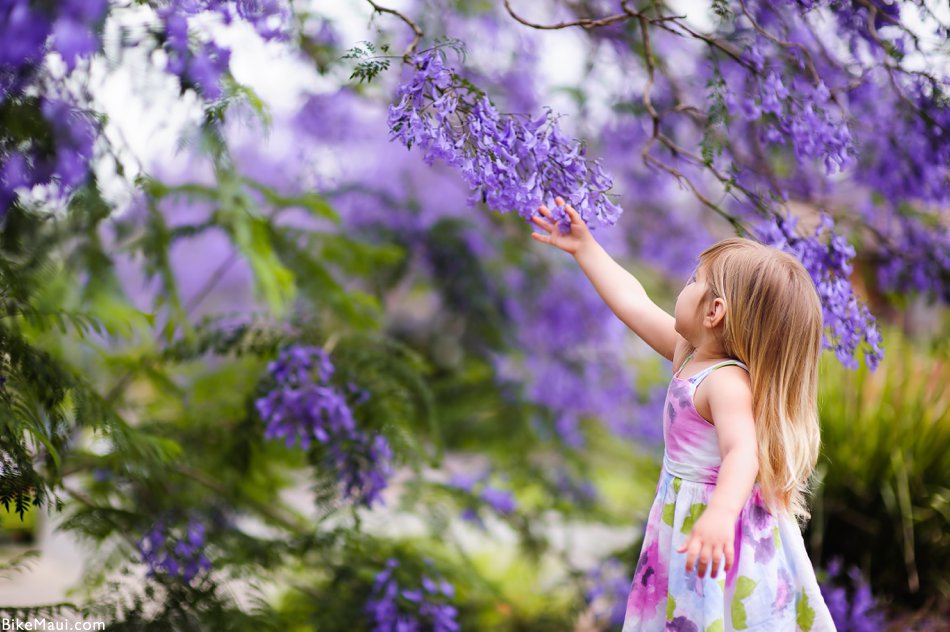
Should you find yourself journeying to Haleakala for one of its outstanding sunrises or biking down the volcano’s steep and stunning slopes, be sure to relish the jacarandas in bloom.
For Mauians, these 90-foot trees remind us of the power and promise of rebirth—and are as much of a part of our treasured landscape as the omnipresent palm tree.

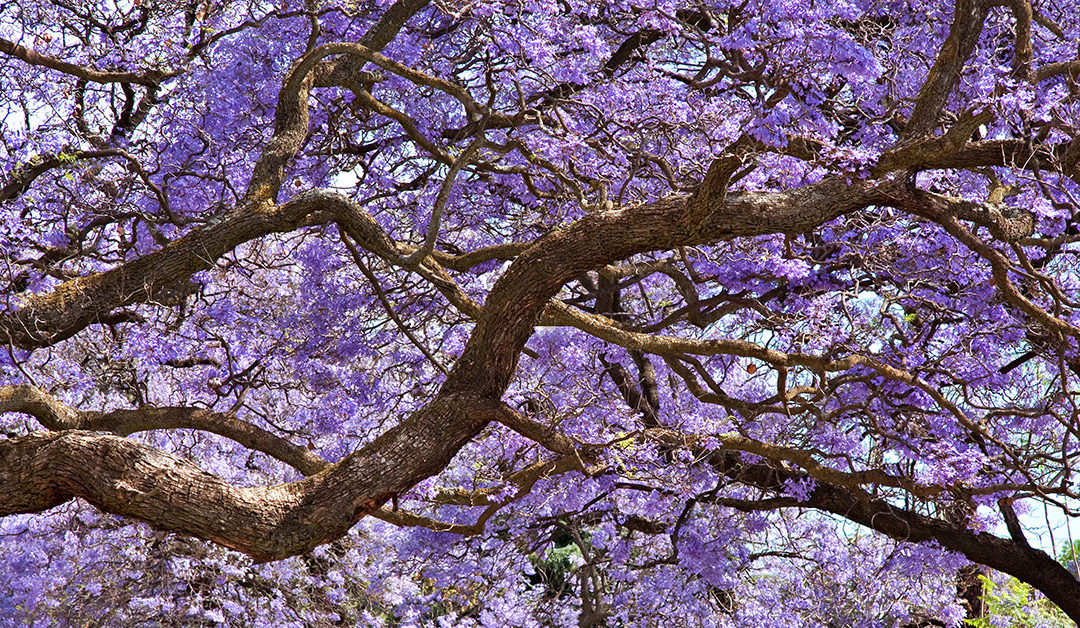



Thank you so much for posting this. My mother and I just were there and admired these trees they were so beautiful! I did not know what they were!
Yes, on our recent trip to both Oahu and Maui.I believe we saw them at the Iolani Palace and also the drive to Hawi where I remarked to my wife what a beautiful tree they were,
I was drawn Upcountry on my first trip to Maui to see the sunrise on Haleakala and spend the day on horseback in the crater. It was May. By daylight I discovered the jacaranda in bloom…everywhere…Glorious! I returned to Maui in May, always in anticipation. I planted jacaranda to enjoy in my SF Bay Area home. I have dwarf jacaranda becoming patio trees in my new Central Valley home where I enjoy sunrise over the Sierras from the sofa with my morning coffee. I think of Upcountry Maui in bloom…
Addendum. I could live Upcountry Maui with my furry family and never leave. I don’t travel anymore, but I reminisce in my garden where my jacaranda thrive amidst my palm trees and fragrant plumeria, among many growing things, birds, butterflies and gophers…